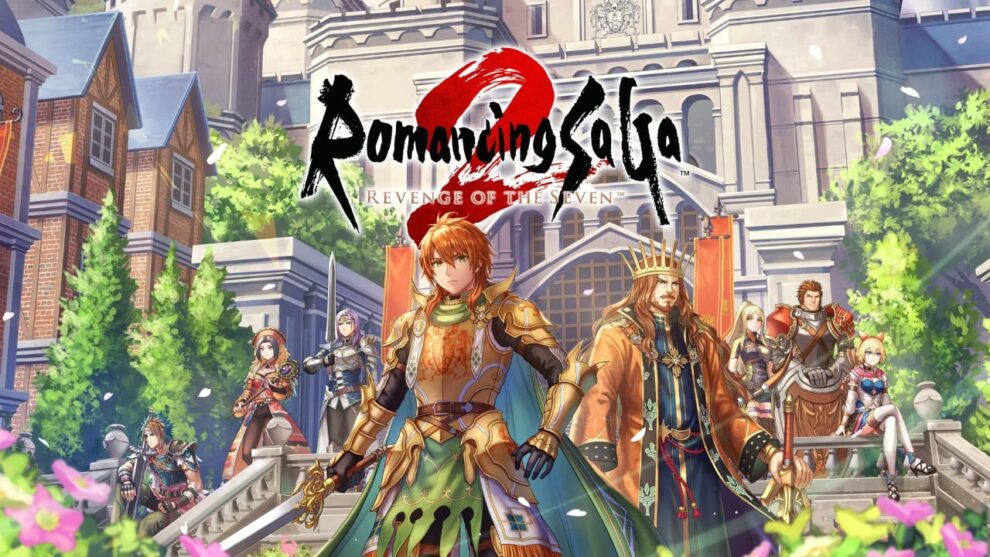Romancing SaGa 2: Revenge of the Seven emerges as an ambitious but uneven remake of the groundbreaking 1993 RPG. The game, which marks Square Enix’s second SaGa release of 2024 following April’s SaGa Emerald Beyond, demonstrates both the potential and pitfalls of modernizing beloved classics for contemporary audiences.
The reimagining of this non-linear RPG maintains its innovative generational storytelling approach, spanning a millennium as players guide the Empire of Avalon through its struggle against the corrupted Seven Heroes. This unique narrative structure, which was revolutionary for its time, allows players to experience the story across multiple generations of rulers, beginning with Emperor Leon and his son Gerard before branching out into various successors recruited throughout the journey.
The game’s non-linear progression stands as one of its strongest features, offering players the freedom to tackle various nations and their respective challenges in any order they choose. These diplomatic missions range from managing natural disasters to navigating treacherous waters, with each decision potentially affecting the course of events. This flexibility in storytelling is enhanced by engaging side quests that expand the game’s world-building, such as an intriguing underwater expedition requiring players to craft a special potion to explore a sunken ship.
However, the generational mechanics present a double-edged sword. While the system allows for interesting gameplay progression through Avalon’s various facilities, including a magic school and smithy that pass down abilities through successive generations, it struggles to create meaningful character connections. The lack of distinct personalities among party members reduces them to mere vessels for skill inheritance rather than compelling characters in their own right.
The battle system represents another area of mixed success. Unlike its contemporary counterpart SaGa Emerald Beyond, Revenge of the Seven opts for a more traditional turn-based approach with a simplified BP system that functions essentially as a standard MP mechanic. While the system includes interesting elements like weakness exploitation and the Overdrive gauge for United Attacks, it lacks the strategic depth found in similar modern RPGs like Octopath Traveler or Persona.

One of the game’s more engaging features is its progression system, which allows characters to develop new abilities through a “glimmer” mechanic during battle. This system provides a satisfying sense of growth as characters unlock new techniques that can be passed down to future generations, adding a compelling collection aspect to the gameplay.
Technical performance on the Nintendo Switch presents notable issues, with players experiencing lengthy load times and occasional frame rate problems. The decision to use full 3D graphics rather than the HD-2D style popularized by games like Octopath Traveler has resulted in a somewhat generic visual presentation, though the monster designs maintain good variety with minimal palette swapping.
Modern quality-of-life improvements help address some of the original game’s notorious difficulty issues, offering multiple difficulty options and automatic health restoration after battles. These additions make the game more accessible to contemporary players while maintaining the core experience for series veterans.
As Square Enix continues its strategy of reviving classic franchises with mid-tier releases, Romancing SaGa 2: Revenge of the Seven represents a somewhat cautionary tale in game remakes. While it preserves the innovative elements that made the original notable, such as its non-linear storytelling and generational mechanics, technical limitations and simplified systems prevent it from fully realizing its potential.
For fans of the SaGa series, the game may offer enough nostalgic value and unique mechanics to warrant attention, but newcomers might find themselves frustrated by its uneven execution and lack of character development. As the second SaGa release of 2024, it demonstrates both the enduring appeal of classic RPG mechanics and the challenges of bringing them into the modern era.
The game ultimately serves as a reminder that successful remakes must balance preservation of original concepts with meaningful modernization, a balance that Revenge of the Seven struggles to achieve consistently despite its ambitious attempts to honor its predecessor’s legacy.
















Add Comment